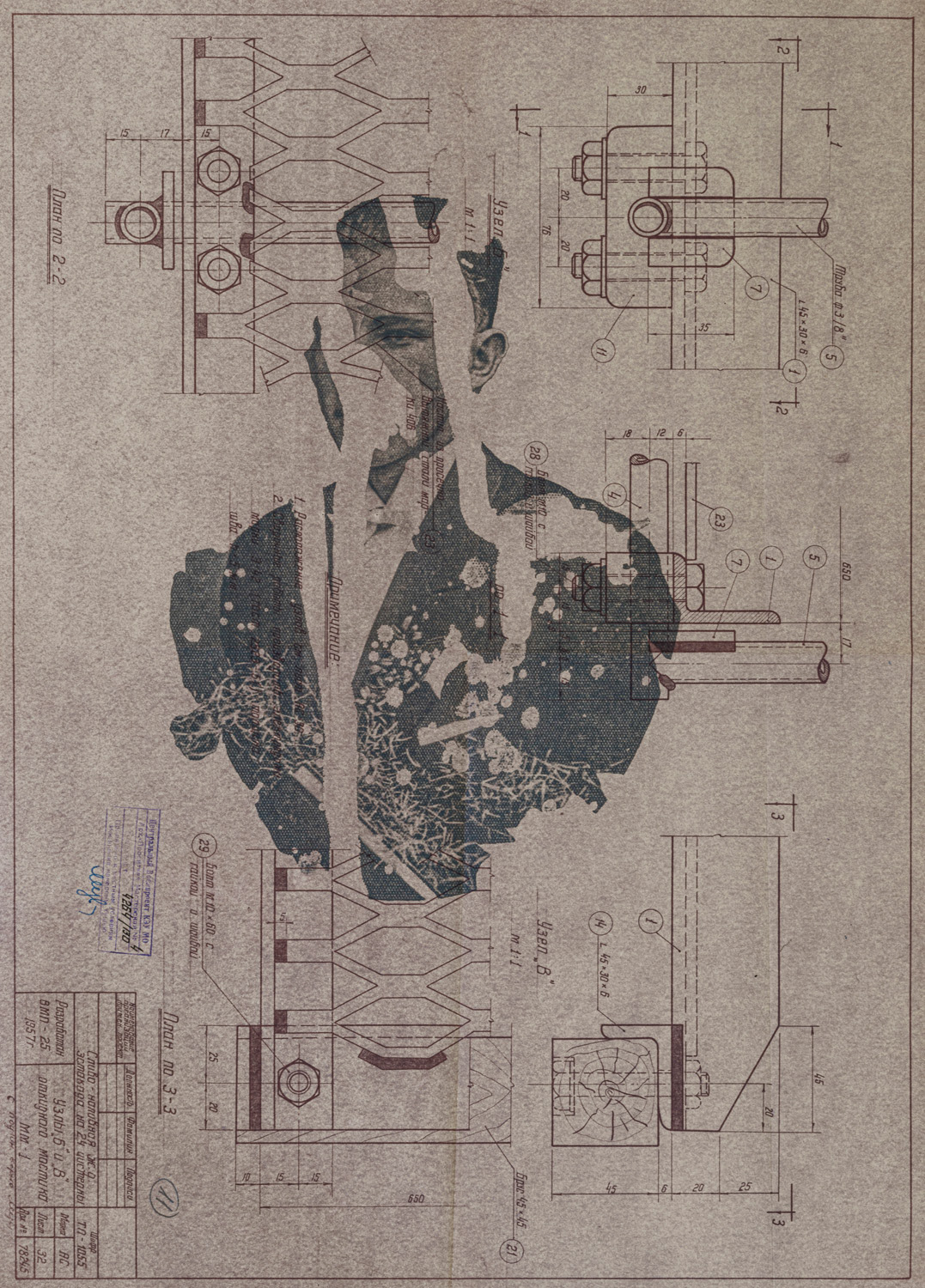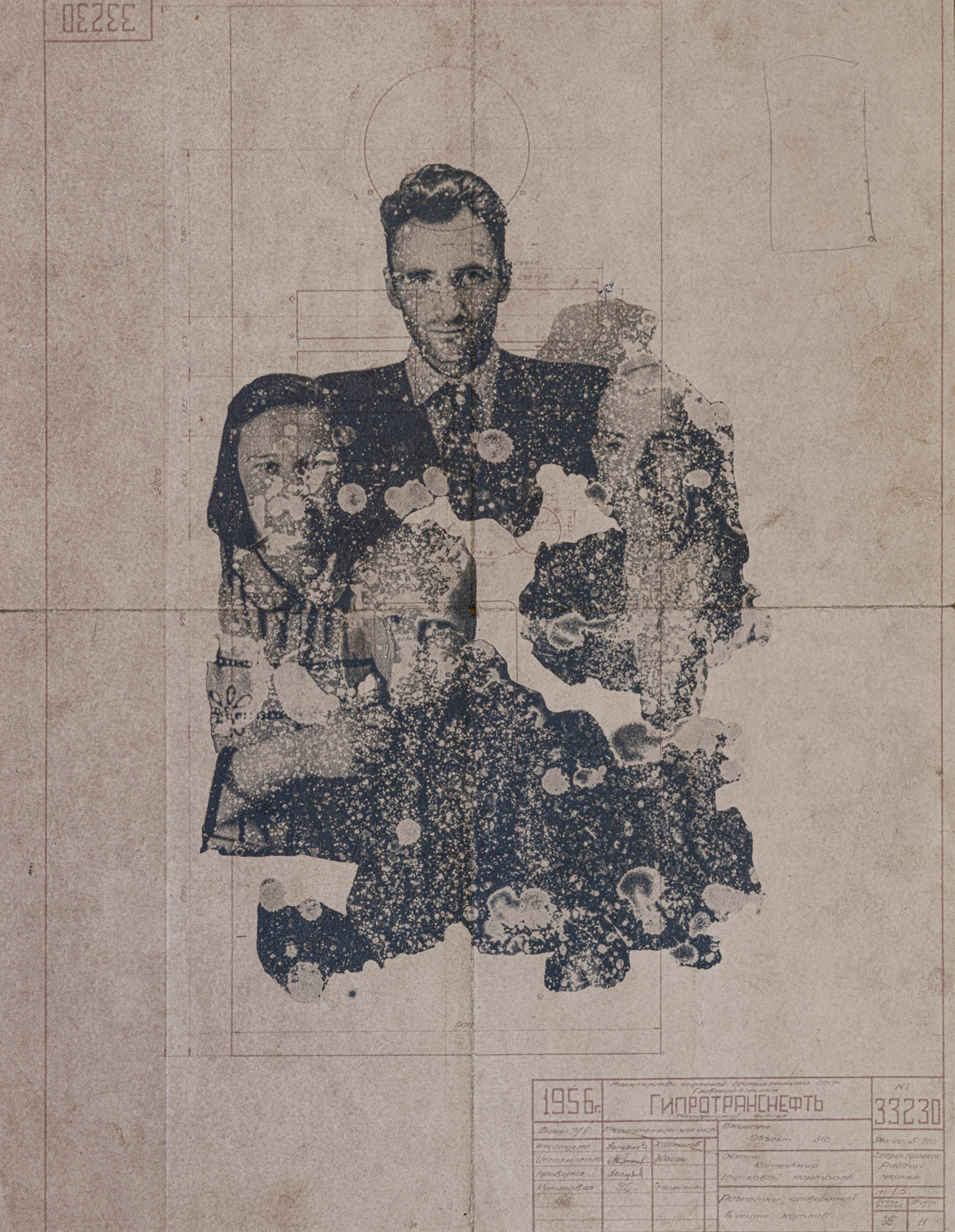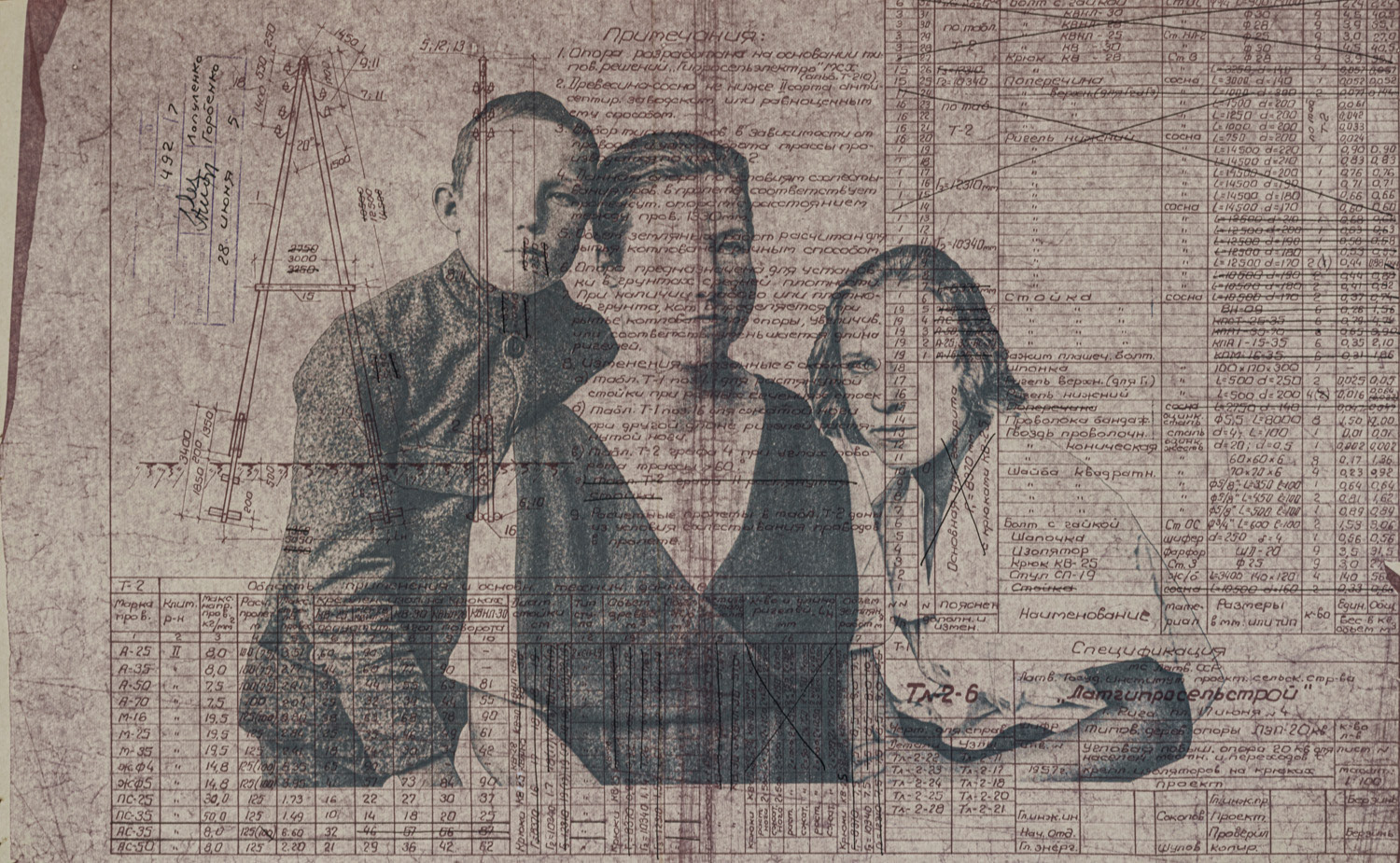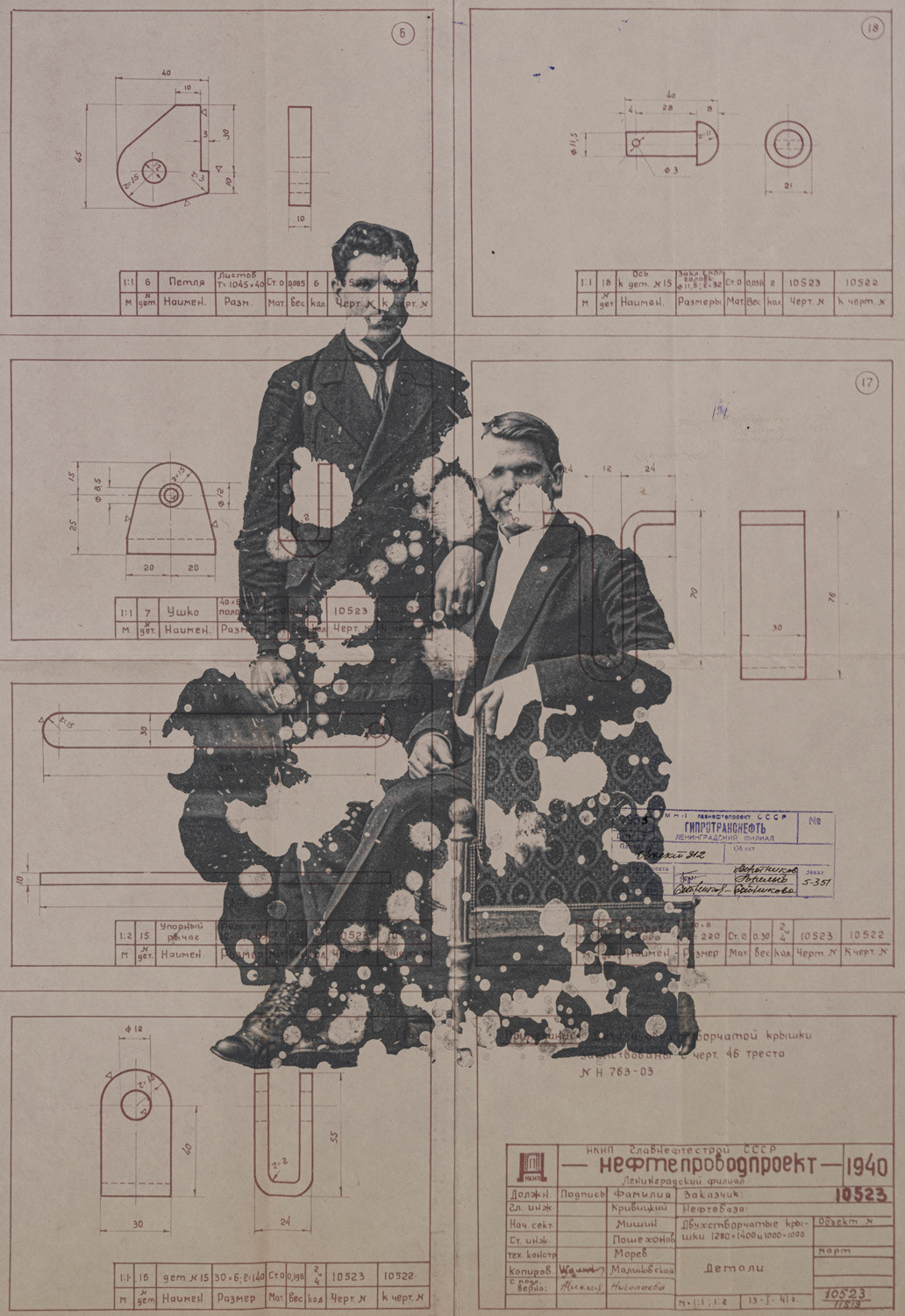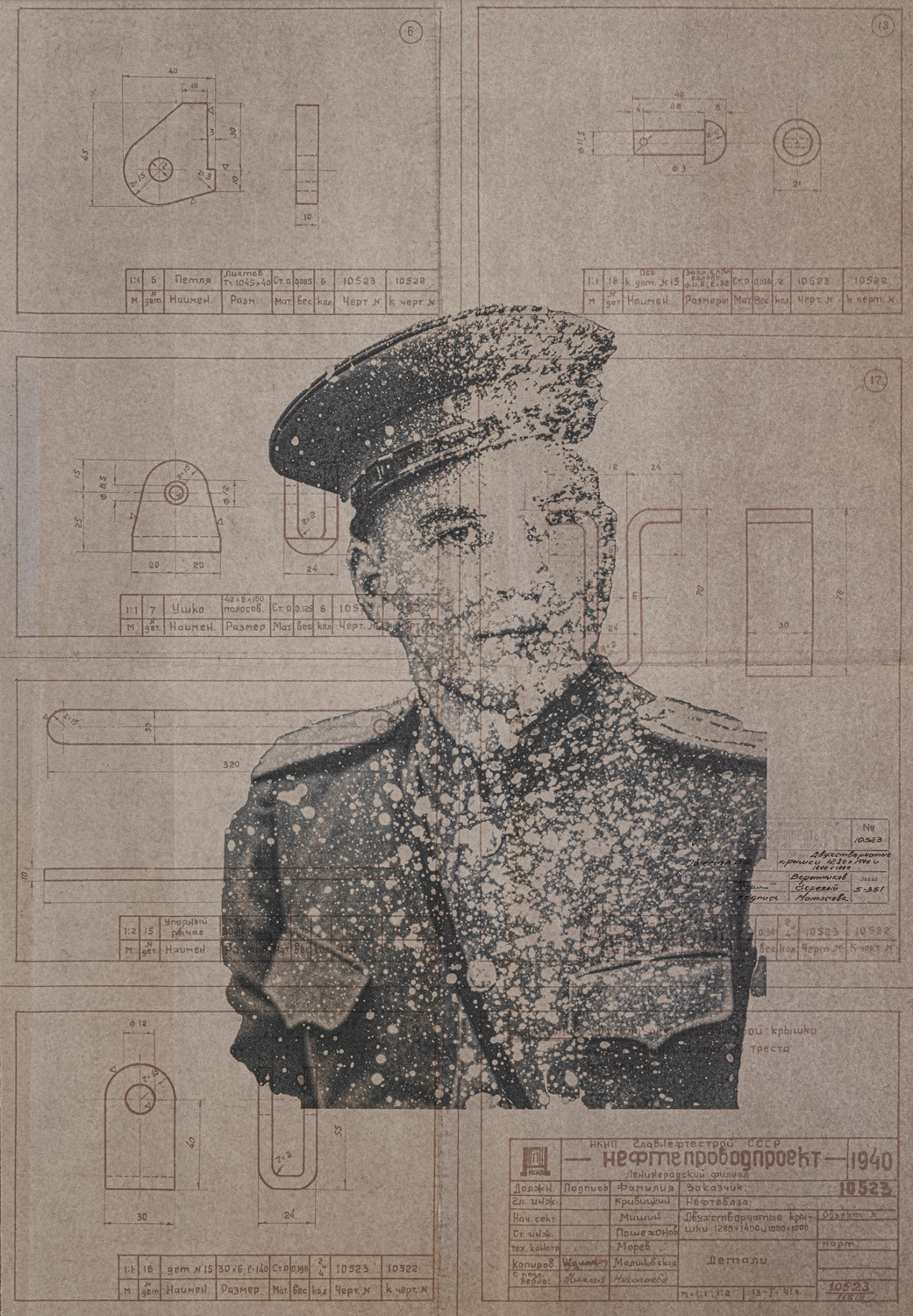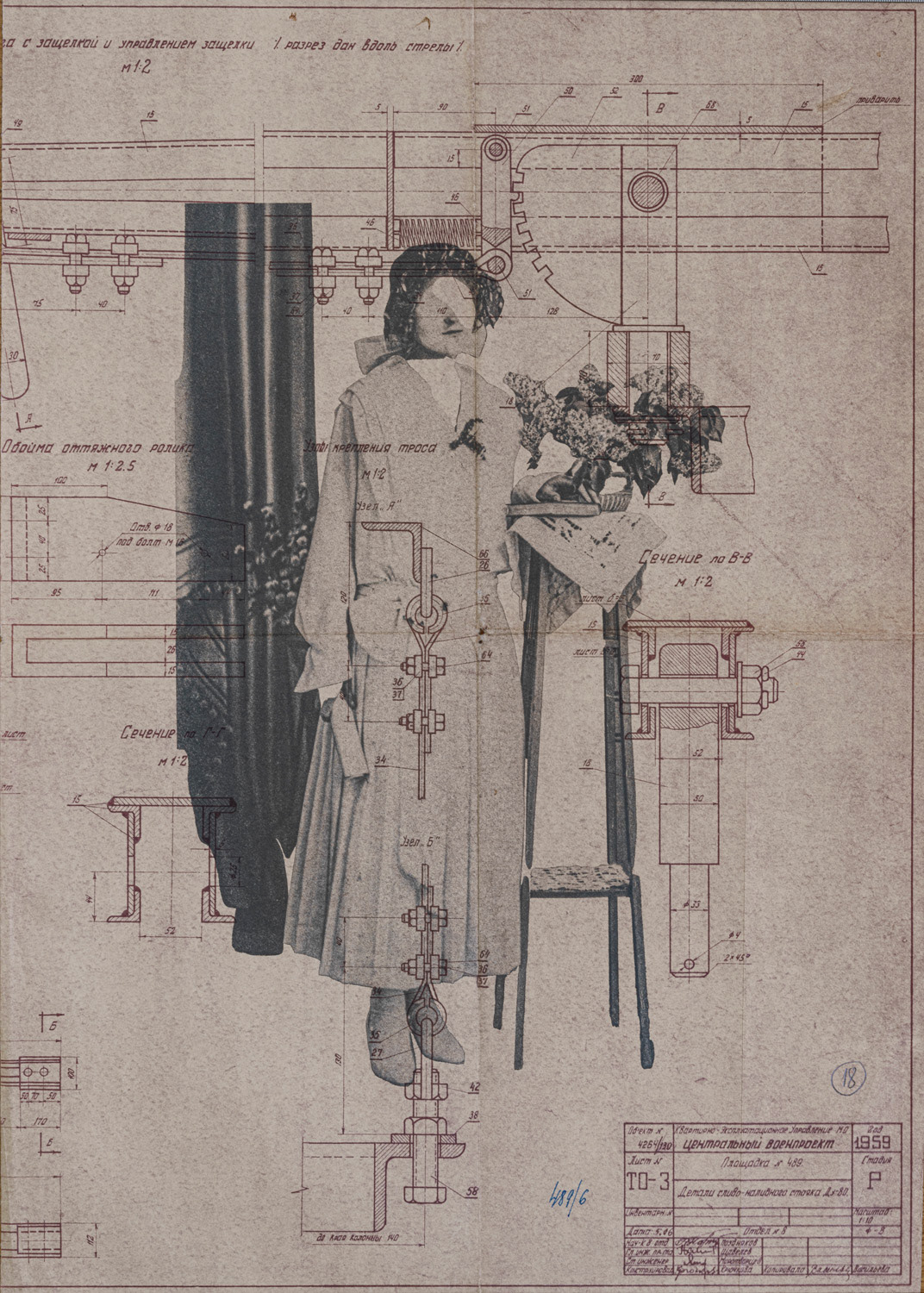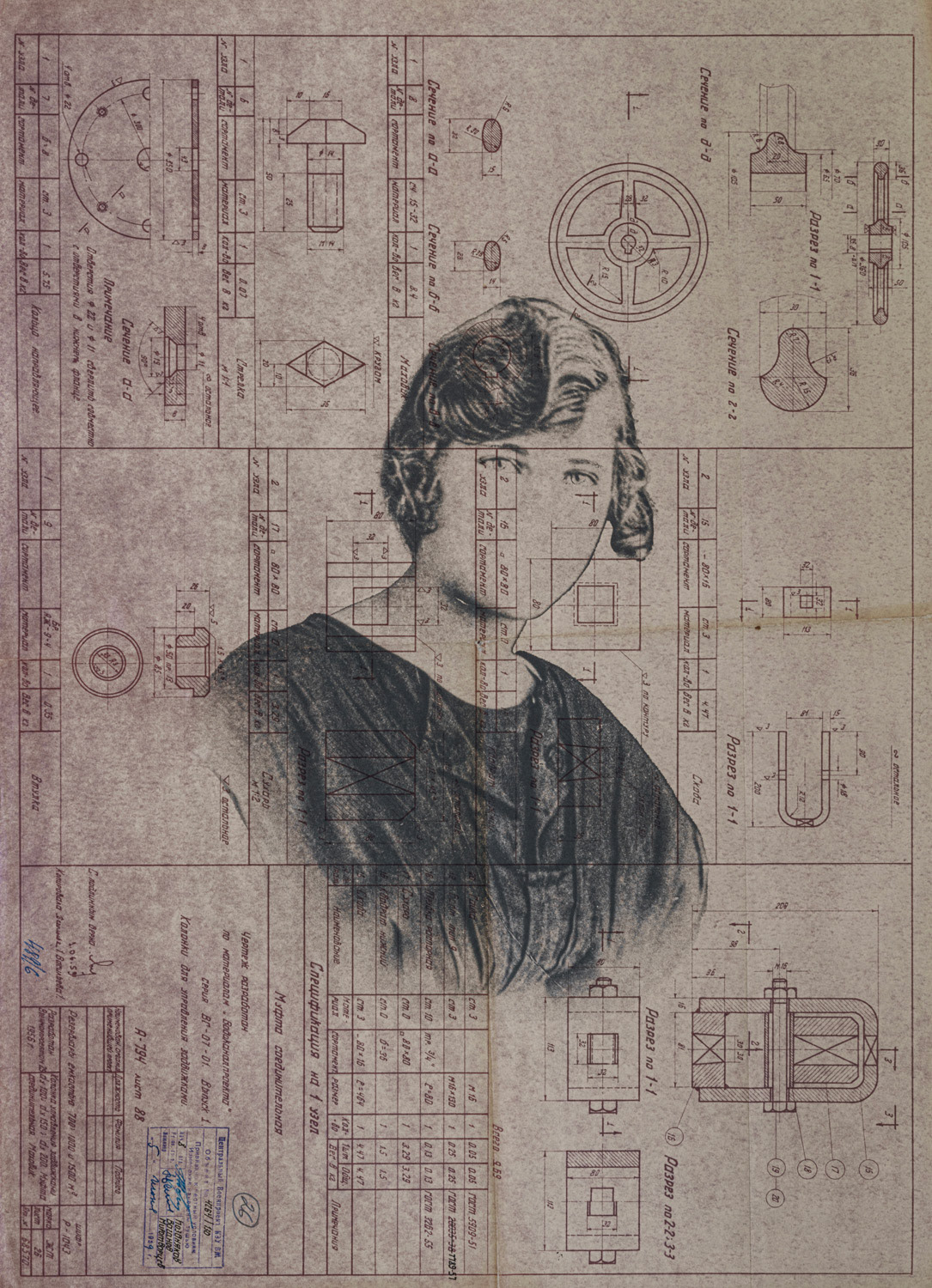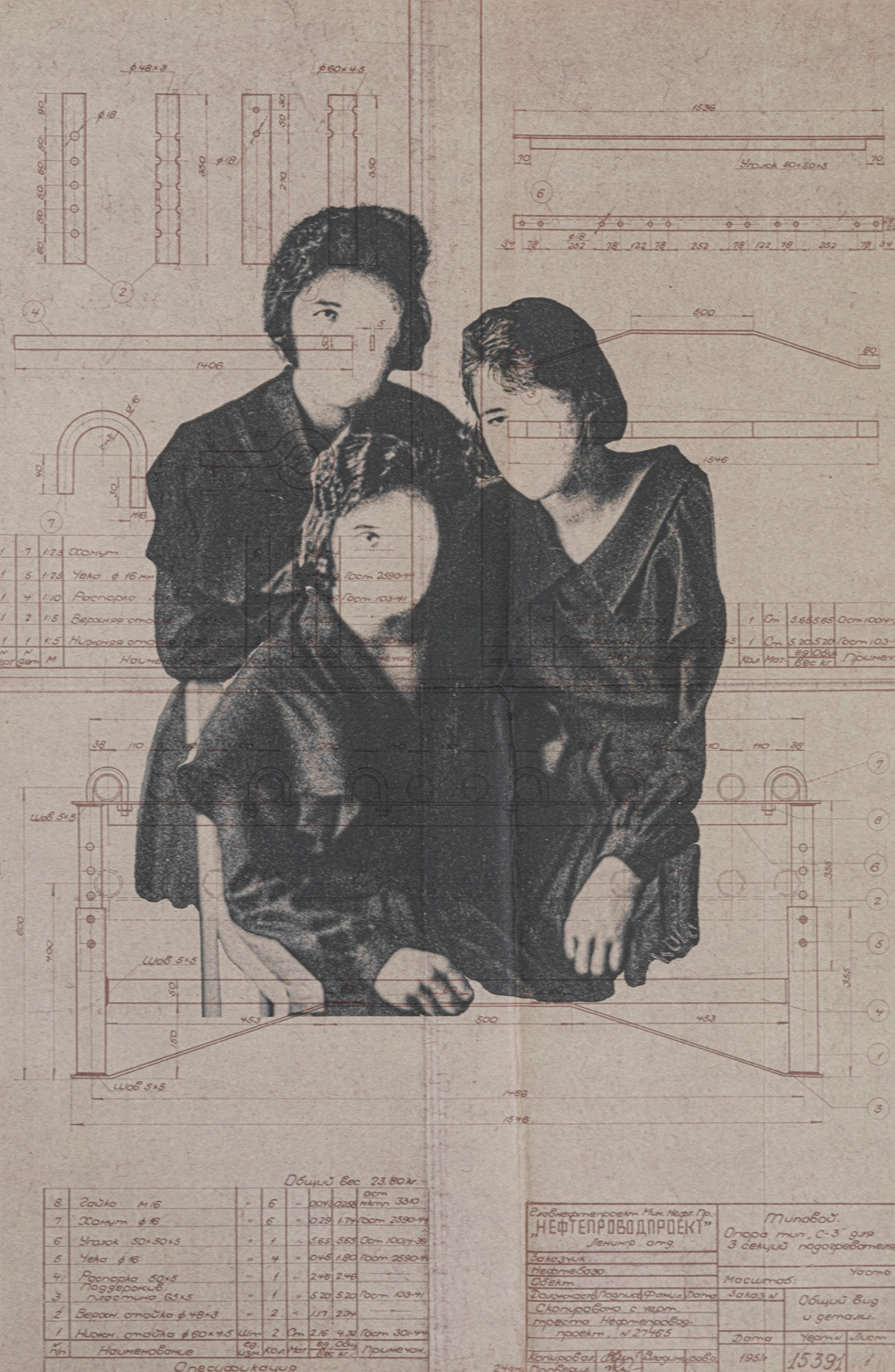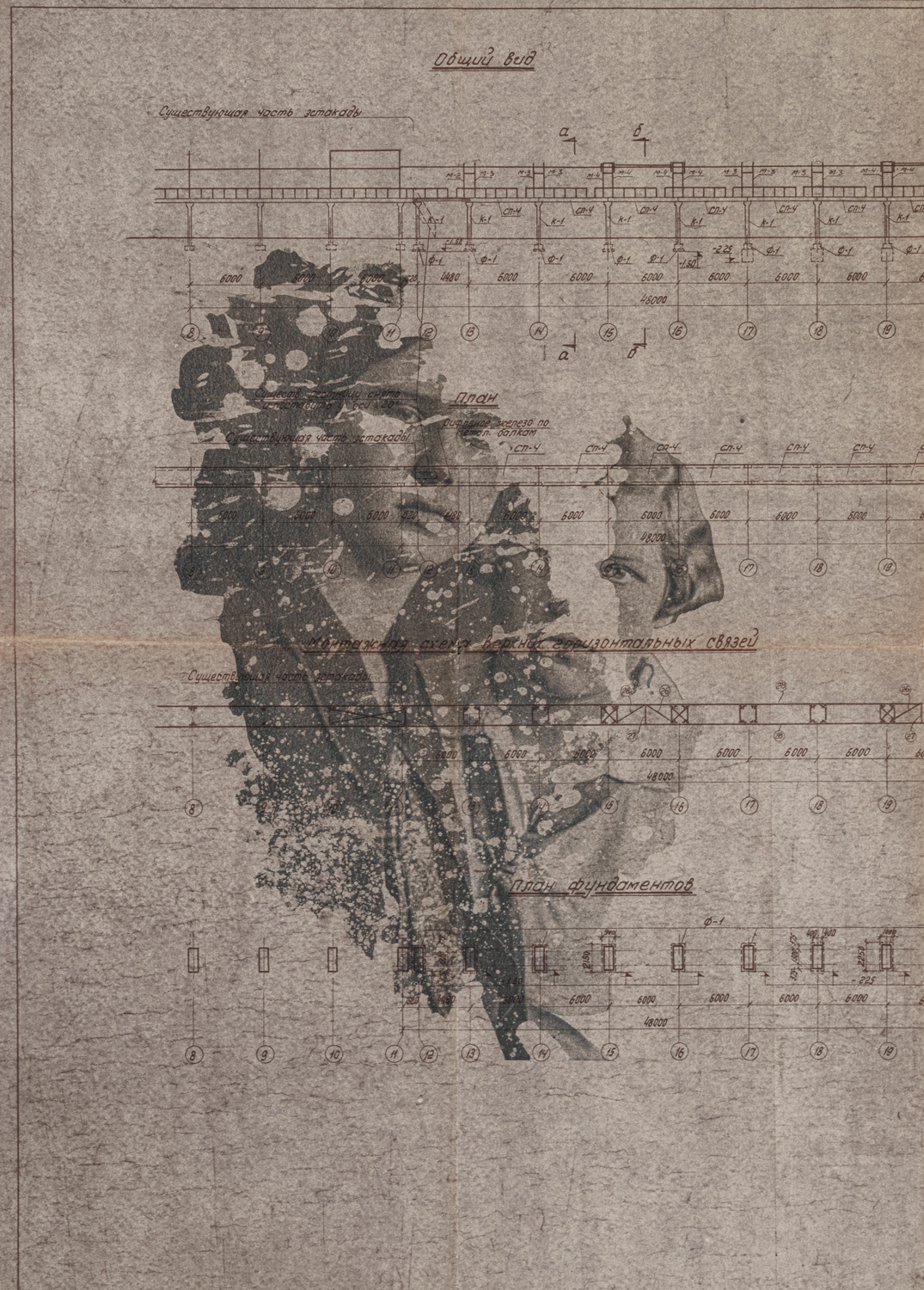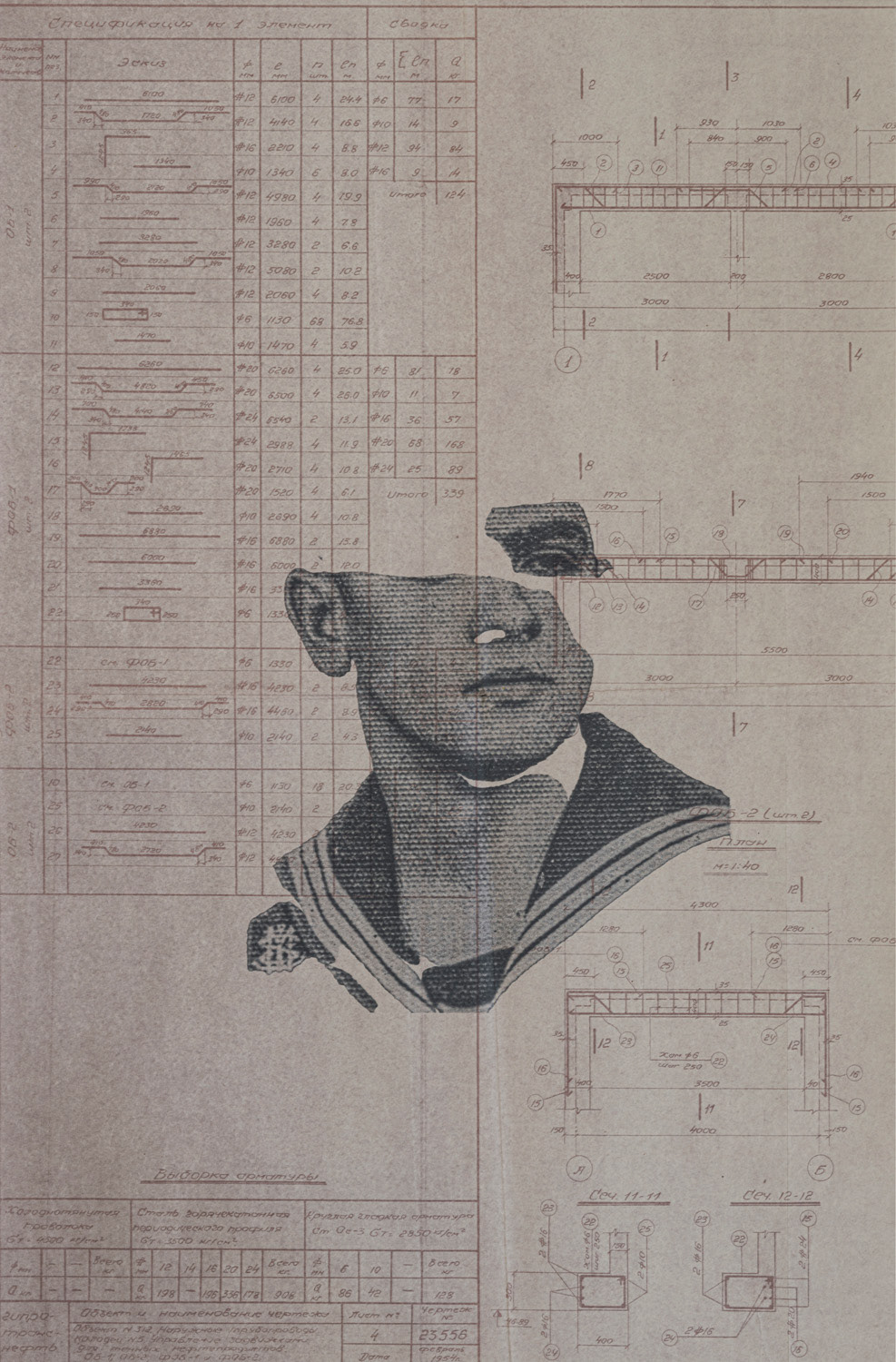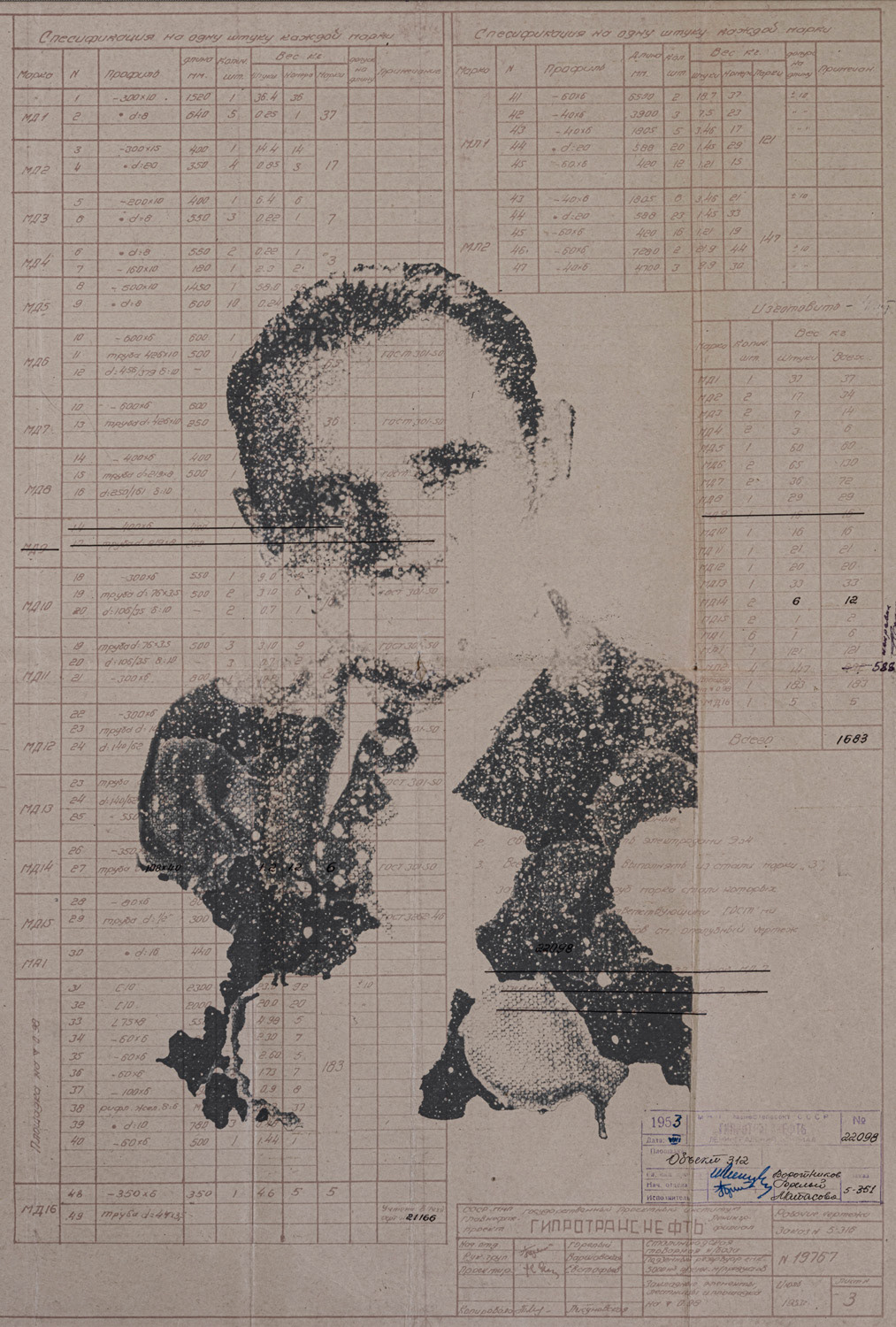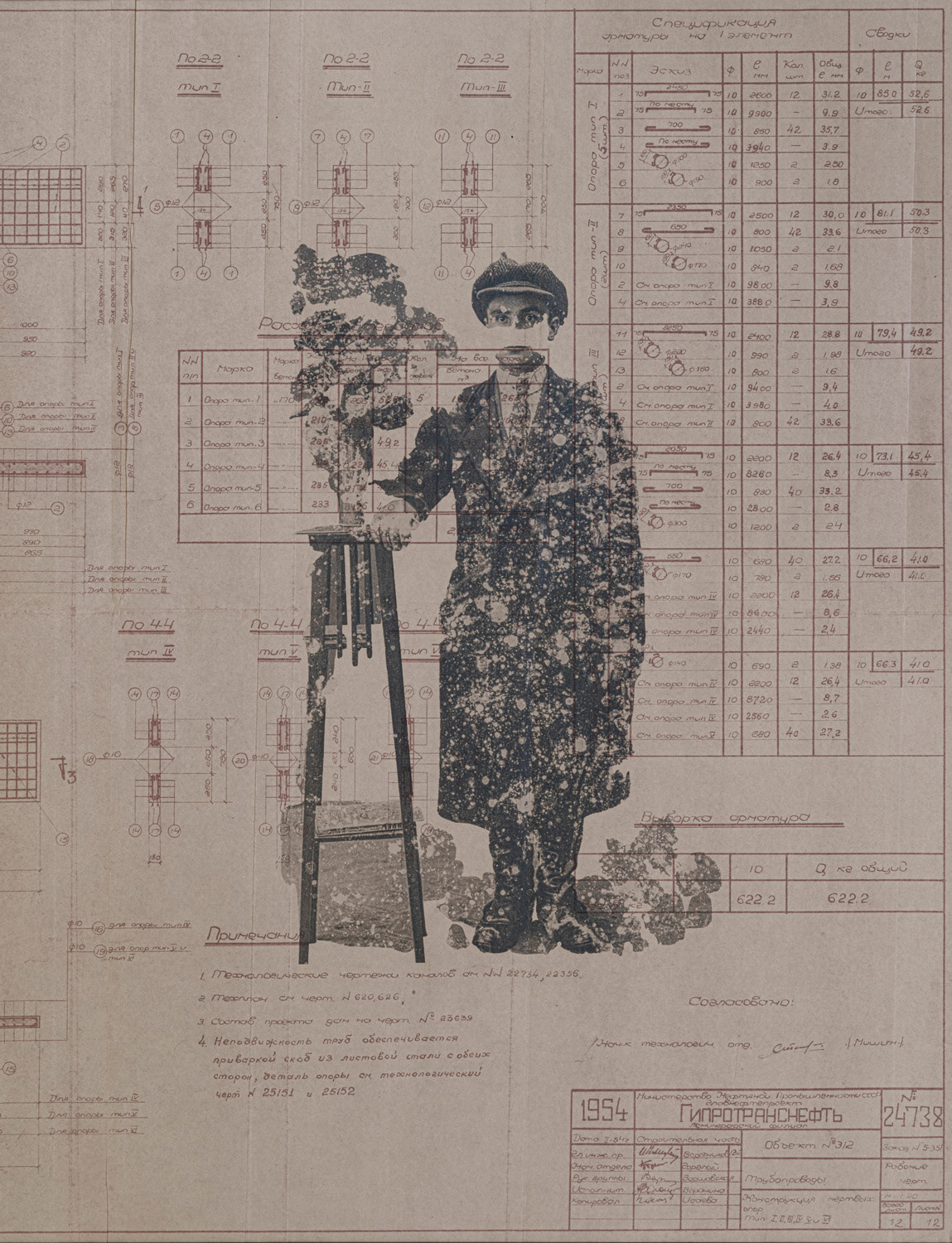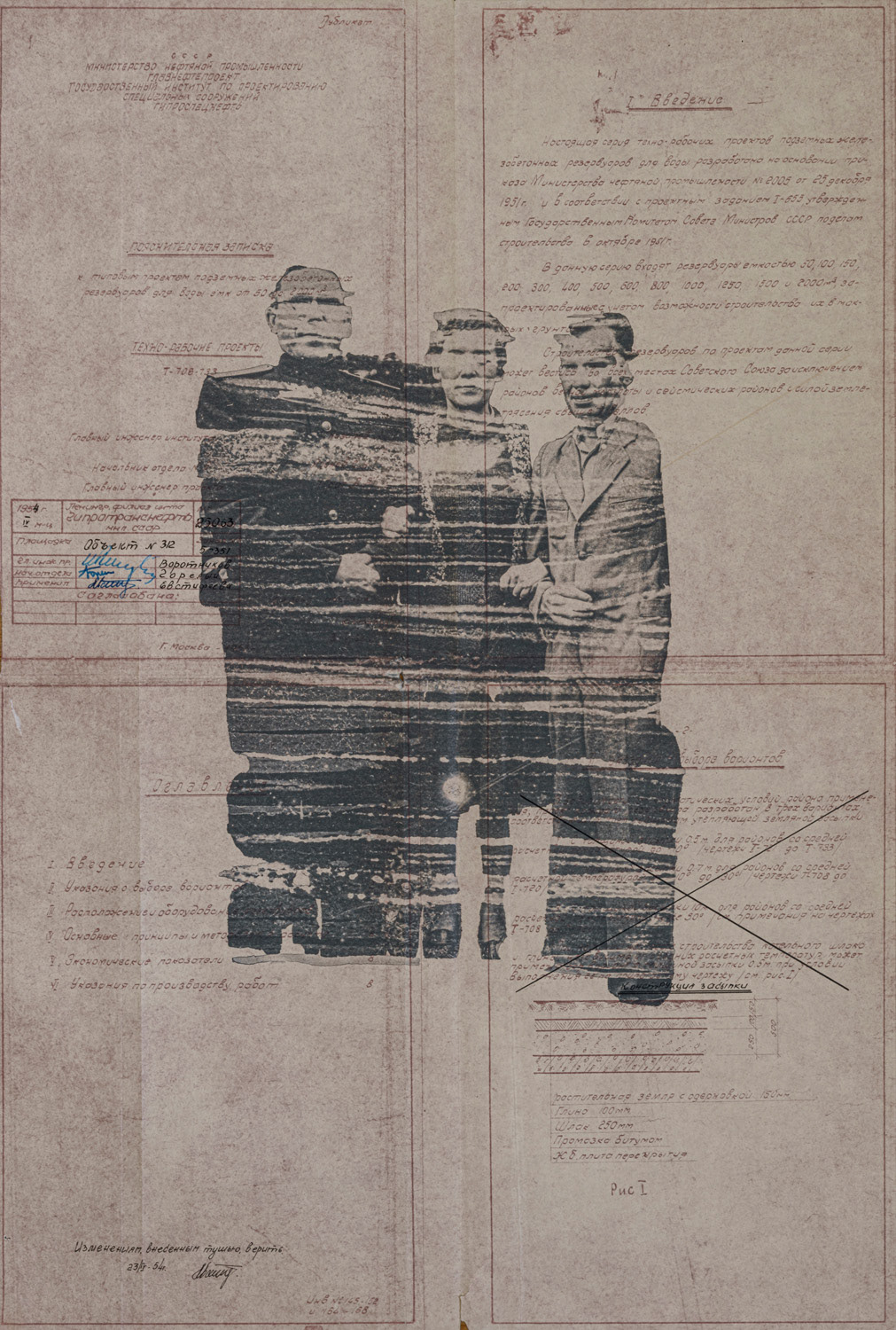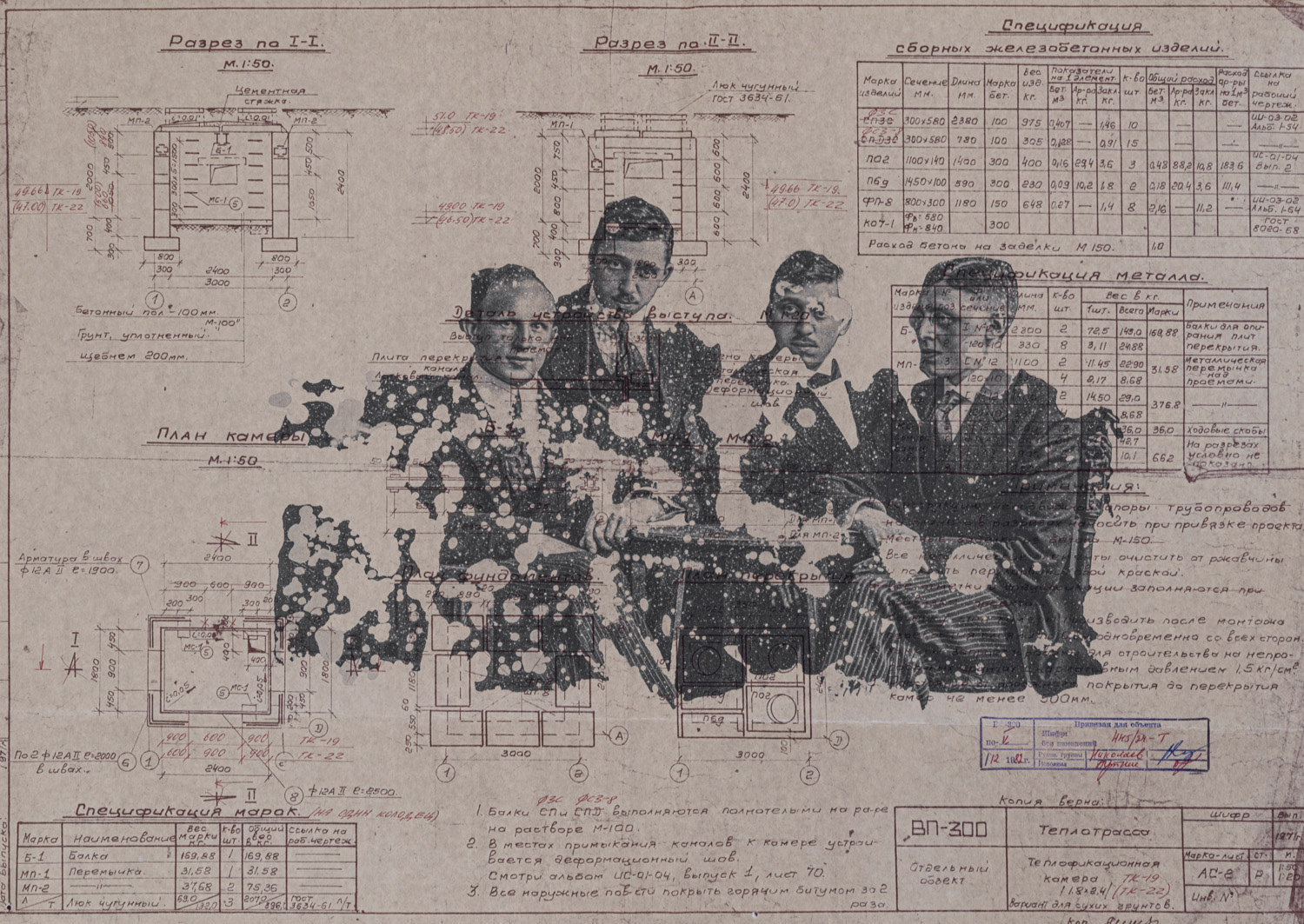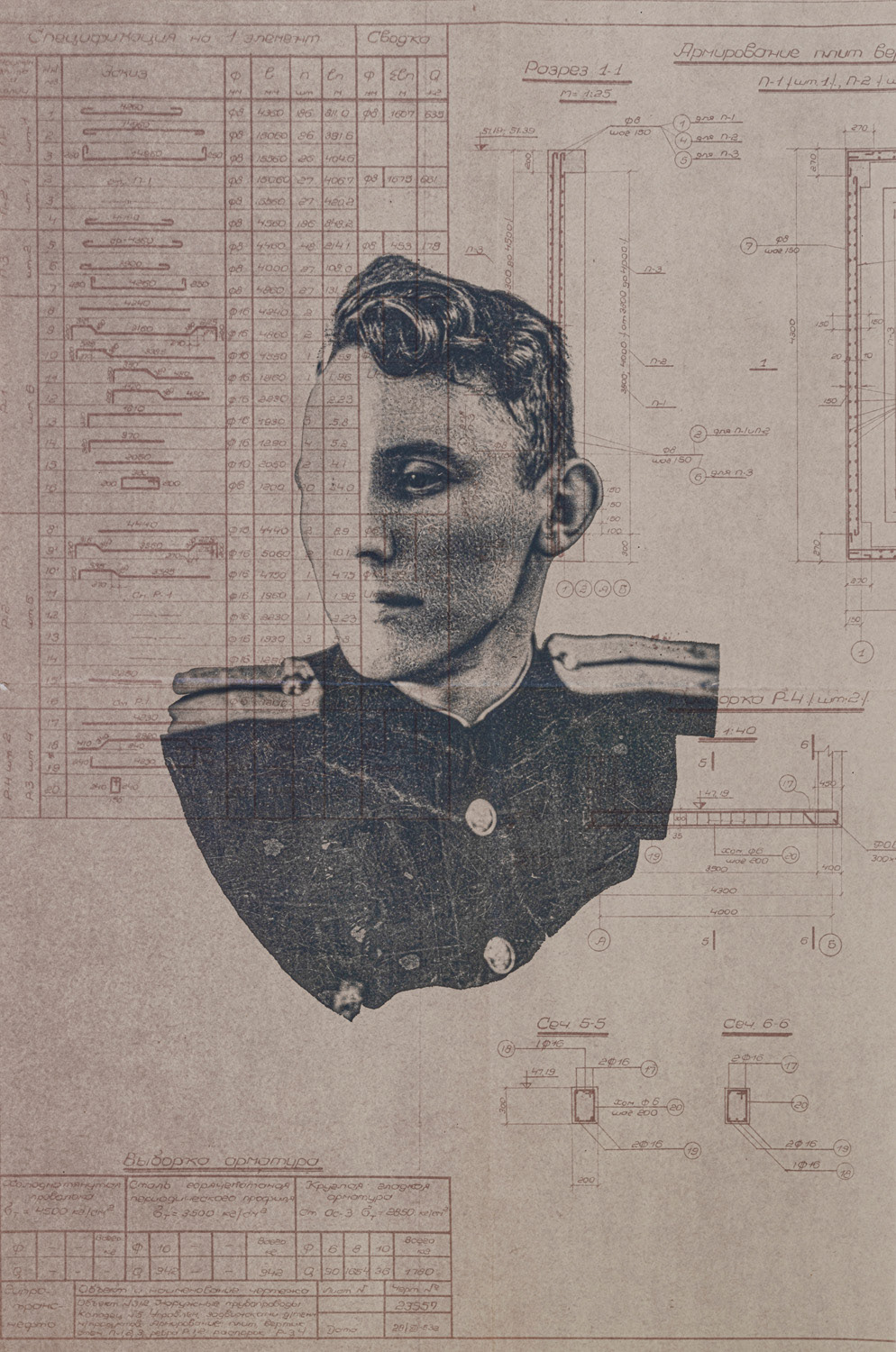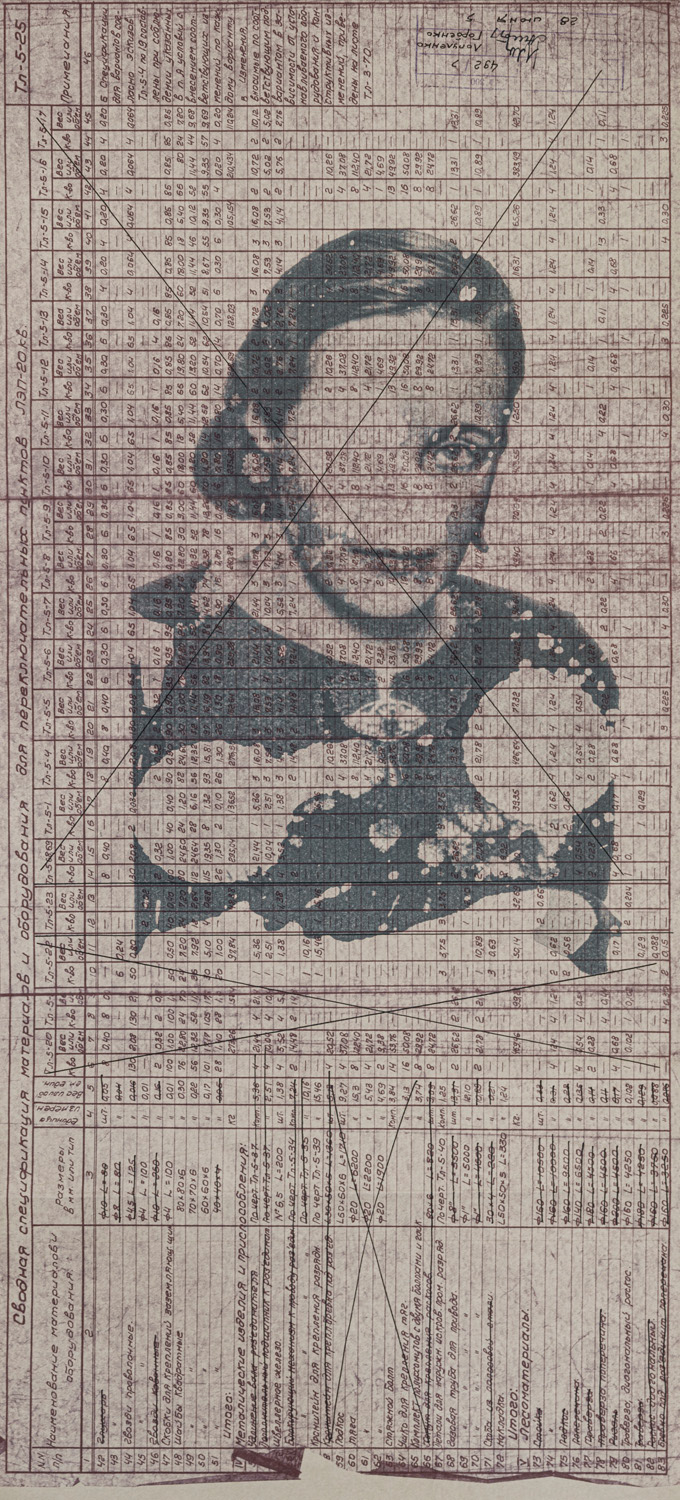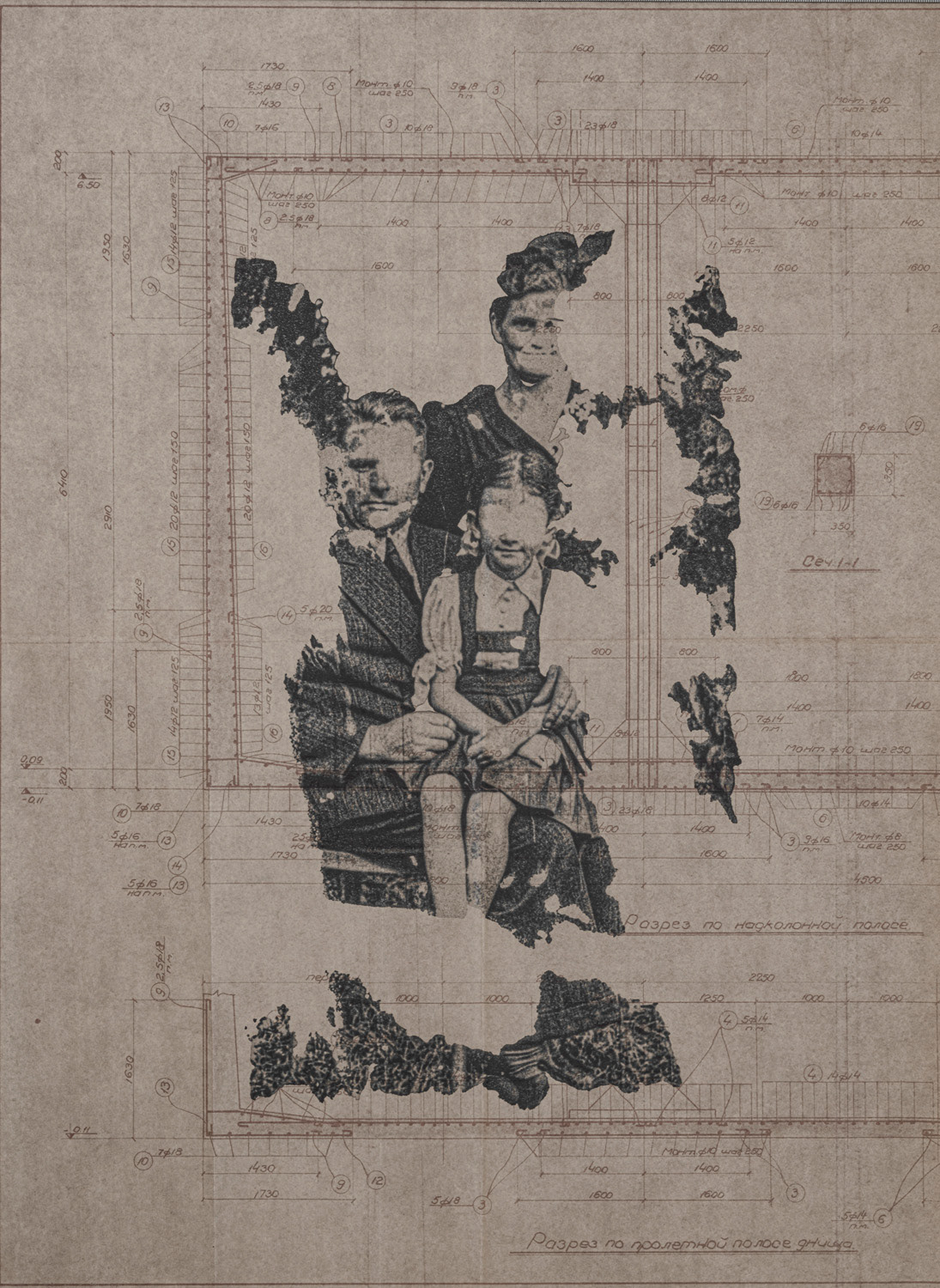May This Inanimate Likeness Remind You of My Living Self (2023)
These works are dedicated to the lost generations, particularly to my grandparents who lived through the turbulent period from World War I, January 13, 1905, until the end of Stalin’s era on March 5, 1953. During this half-century, the lives of approximately 140 million people worldwide were crushed by acts of war, war crimes, the Holocaust, and Stalin’s deportations of ethnic minorities, prosperous citizens, and politically marginalized individuals. Of those 140 million, around 80 million perished.
Photography often serves the purpose of storing both collective and private memories. However, the content of a family photo archive should be viewed ambiguously. On one hand, it preserves a record of personal history, lifestyle testimonies, and collective rituals while also reflecting the spirit of the time and its unique culture. On the other hand, the essence of a private photo archive is best characterised by the Freudian concept of screen memory. Screen memory refers to a distorted childhood recollection, typically visual rather than verbal. It functions as a shield that deflects or protects against significant memories while reflecting subconscious fantasies about childhood. The family photo archive also embodies a collective fantasy of an ideal cultural state, often unattainable or distant from reality. Family archives typically reveal little about the socio-political realities of their time; moreover, they exude a striking optimism. These images are infused with an aura of collective forgetfulness, which is insurmountable and obstructs our understanding of the true feelings, destinies, experiences, and spirit of the time of the portrayed individuals.
The works are based on various found family photo archives created between World War I and Stalin's death. I have transformed the recognisable identities of the depicted individuals in analog ways, seeking a visual code of remembrance and forgetfulness in the diverse states of the materiality of collective memory. Later, source images were scanned and printed on old found documents (blueprints, instructions, etc.) from the Soviet era.
Each work is a unique archival pigment ink print on old paper.
